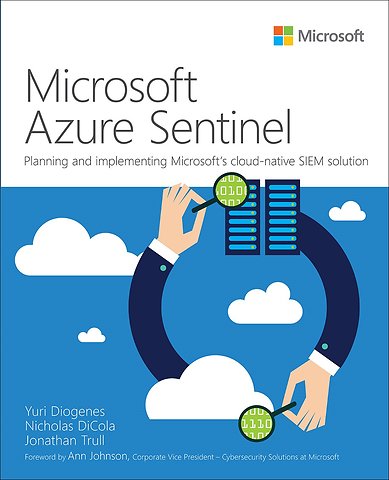

Yuri Diogenes is a Senior Content Developer on the CSI Enterprise Mobility Team, focusing on BYOD and Azure Security Center.
Meer over de auteursMicrosoft Azure Sentinel
Planning and implementing Microsoft s cloud-native SIEM solution
Paperback Engels 2020 1e druk 9780136485452Samenvatting
Plan, deploy, and operate Azure Sentinel, Microsoft’s advanced cloud-based SIEM
Microsoft’s cloud-based Azure Sentinel helps you fully leverage advanced AI to automate threat identification and response — without the complexity and scalability challenges of traditional Security Information and Event Management (SIEM) solutions. Now, three of Microsoft’s leading experts review all it can do, and guide you step-by-step through planning, deployment, and daily operations. Leveraging in-the-trenches experience supporting early customers, they cover everything from configuration to data ingestion, rule development to incident management… even proactive threat hunting to disrupt attacks before you’re exploited.
Three of Microsoft’s leading security operations experts show how to:
- Use Azure Sentinel to respond to today’s fast-evolving cybersecurity environment, and leverage the benefits of its cloud-native architecture
- Review threat intelligence essentials: attacker motivations, potential targets, and tactics, techniques, and procedures
- Explore Azure Sentinel components, architecture, design considerations, and initial configuration
- Ingest alert log data from services and endpoints you need to monitor
- Build and validate rules to analyze ingested data and create cases for investigation
- Prevent alert fatigue by projecting how many incidents each rule will generate
- Help Security Operation Centers (SOCs) seamlessly manage each incident’s lifecycle
- Move towards proactive threat hunting: identify sophisticated threat behaviors and disrupt cyber kill chains before you’re exploited
- Do more with data: use programmable Jupyter notebooks and their libraries for machine learning, visualization, and data analysis
- Use Playbooks to perform Security Orchestration, Automation and Response (SOAR)
- Save resources by automating responses to low-level events
- Create visualizations to spot trends, identify or clarify relationships, and speed decisions
- Integrate with partners and other third-parties, including Fortinet, AWS, and Palo Alto
Specificaties
Lezersrecensies
Over Nicholas DiCola
Over Jonathan Trull
Inhoudsopgave
-Current Threat Landscape• Security Challenges for SecOps
-Threat Intelligence
-Cloud-native SIEM
Chapter 2 – Introduction to Azure Sentinel
-Architecture - Adoption Considerations
-Enabling Azure Sentinel
-Data Ingestion
-Accessing ingested data
Chapter 3 – Analytics
-Why Use Analytics for Security?
-Understanding Analytic Rules
-Creating Analytic Rules
-Validating Analytic Rules
Chapter 4 – Incident Management
-Introduction to Incident Management
-Security Incident in Azure Sentinel
-Investigating an Incident
Chapter 5 – Threat Hunting
-Introduction to Threat Hunting
-Hunting threats in Azure Sentinel
-Creating New Hunting Queries and Bookmarks
Chapter 6 – Jupyter Notebooks
-Introduction
-Azure Notebooks and Azure Sentinel
-Connecting to Azure Sentinel
-Notebooks for Hunting and Investigation
Chapter 7 – Automation with Playbooks
-The Importance of SOAR
-Real-time Automation
-Post-incident Automation
Chapter 8 – Data Visualization
-Azure Sentinel Workbooks
-Using Built-in Workbooks
-Creating Custom Workbooks
-Creating Visualization in PowerBI and Excel
-Creating Visualization in PowerBI
Chapter 9 – Integrating with Partners
-Connecting with Fortinet
-Connecting with Amazon Web Services (AWS)
-Connecting with Palo Alto
Appendix A – Introduction to Kusto Query Language
Anderen die dit boek kochten, kochten ook
Rubrieken
- advisering
- algemeen management
- coaching en trainen
- communicatie en media
- economie
- financieel management
- inkoop en logistiek
- internet en social media
- it-management / ict
- juridisch
- leiderschap
- marketing
- mens en maatschappij
- non-profit
- ondernemen
- organisatiekunde
- personal finance
- personeelsmanagement
- persoonlijke effectiviteit
- projectmanagement
- psychologie
- reclame en verkoop
- strategisch management
- verandermanagement
- werk en loopbaan





